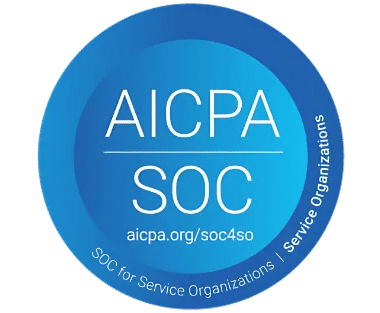What Is Subscription Lifecycle Management | Expert Guide 2025

The fastest-growing SaaS companies all have one thing in common. They do not just gain subscribers they keep them coming back for more. If SaaS Subscriptions are managed well, they thrive by building strong, ongoing connections with their customers. Subscription lifecycle management is the key to making this happen.
Why does subscription lifecycle management matter? It’s more than just keeping a service running. Done well, it transforms one-time buyers into loyal users, boosting growth and creating a steady stream of income. It is about delivering value at every turn so subscribers stick around and tell others about their great experience.
A recent Forbes article highlights that companies using proactive churn strategies during subscription lifecycle process has see a significant increase in customer lifetime value. The key is to anticipate subscriber behaviour and respond with timely, relevant actions that make customers feel seen and appreciated before they ever choose to leave.
This guide will walk you through the essentials of managing subscriptions effectively. We’ll explore each stage, spotlight important metrics, and show you how to overcome common challenges along the way
What Is Subscription Lifecycle Management?
It refers to the structured process of overseeing a customer’s journey with a subscription-based service. It commences with their initial enrolment and extends through their usage and renewal phases. Applicable to offerings such as software solutions or curated monthly deliveries, this approach ensures subscribers receive consistent support and value.
Stages of the Subscription Lifecycle
Understanding the various stages in subscription lifecycle management is key to delivering long-term value and maintaining a consistent revenue flow. Each stage offers an opportunity to engage, support, and delight the customer.
1) Acquisition
The subscription lifecycle begins with acquisition the first interaction a potential customer has with your brand. This stage focuses on turning curious visitors into committed subscribers.
To achieve this, businesses must present clear value, create targeted marketing strategies, and offer a frictionless sign-up process.
The experience at this stage must be smooth, reassuring, and welcoming, as it sets the tone for the entire journey. When prospects find the sign-up simple and the offer compelling, they are more likely to subscribe and continue their journey.
2) Onboarding
Once a user has subscribed, it is essential to guide them through the initial steps. Onboarding is the foundation of a long-term relationship. It is during this phase that customers learn how to use the service and start seeing its value.
Businesses can support users by offering easy-to-follow tutorials, welcome messages, access to support channels, and helpful content.
The goal here is to eliminate confusion and create confidence. When onboarding is done right, subscribers feel empowered and are more likely to stay.
3) Engagement
After onboarding, the focus shifts to keeping the subscriber engaged. Engagement is the heartbeat of subscription lifecycle management.
It is about making sure users continue to find value and stay connected to your product or service. This can be achieved by understanding how they use the product and offering timely support, updates, and insights.
Regular interaction through newsletters, educational content, and feedback opportunities makes customers feel heard and appreciated. Consistent engagement ensures that your subscribers don’t lose interest or forget why they subscribed in the first place.
4) Billing and Payments
Billing is more than just a transaction; it’s a key point of trust. Accurate, timely, and clear billing plays a crucial role in the overall experience. Subscription businesses deal with different billing cycles, pricing models, and payment preferences. Managing these effectively is essential. Any errors in billing or payment can lead to frustration, confusion, or even cancellations.
A transparent billing that provides timely reminders and flexible payment options not only reduces support requests but also builds long-term customer confidence.
5) Renewal
When a subscription period nears its end, the renewal stage comes into focus. This is the moment to remind customers of the value they’ve gained and why continuing the service makes sense.
A well-handled subscription renewal strategy involves timely communication, clear renewal instructions, and perhaps incentives like loyalty perks or discounts. Subscribers who feel they’ve received consistent value are more likely to renew without hesitation. Handling renewals with care also helps ensure predictable revenue and avoids surprises in churn.
6) Churn or Cancellation
Despite best efforts, some subscribers may choose to leave. The churn stage is often seen as negative, but it also offers a chance to learn. Understanding why customers cancel their subscriptions can provide valuable insights.
Exit surveys, short interviews, or even simple follow-up messages can reveal patterns that businesses can act on. Additionally, offering options like pausing the subscription or choosing a lighter plan can sometimes prevent a complete cancellation.
When handled thoughtfully, even the churn stage can build goodwill and lead to future reactivation.
7) Reactivation
Just because a customer cancel does not mean the retention ends. Reactivation is about tweaking interest and inviting former subscribers to return.
A thoughtful approach, such as personalized emails, special comeback offers, or highlighting new features, can gently encourage previous users to reconsider.
Timing is key reaching out too late or too soon can reduce effectiveness. Reactivation strategies work best when they focus on reminding users of the value they once enjoyed and showing them what is new or improved. With the right approach, many subscribers are happy to give it another try.
Challenges Faced During the Subscription Lifecycle Management Process
Even with thoughtful strategies in place, handling subscription lifecycle management is not without obstacles. These challenges, if left unaddressed, can impact customer satisfaction, operational efficiency, and overall business growth. Recognizing and resolving them early is key to long-term success.
1) Lack of Visibility Into Subscriber Behaviour
Understanding how customers interact with your service is crucial in subscription lifecycle management.
When there is no clear visibility into usage patterns or engagement behaviour, it becomes difficult to offer timely support or targeted improvements.
Without accurate insights, decision-making becomes reactive instead of proactive. Integrating behaviour tracking tools and analytics helps identify trends, highlight friction points, and create tailored experiences that truly meet customer needs.
2) Complicated Pricing Structures
A complicated pricing model can create barriers right at the start. If customers struggle to understand what they are paying for or feel uncertain about cost structures, they may hesitate to subscribe.
Moreover, unclear pricing can lead to billing-related complaints later in the journey. Businesses benefit greatly from offering clear, straightforward plans that make decision-making easier and align with user expectations. Transparency builds trust and reduces confusion throughout the lifecycle.
3) Scalability Limitations as Demand Grows
What works for managing a small user base may not work for a larger one. As your subscriber count increases, manual processes become inefficient and prone to error. Without automation managing subscriptions becomes difficult to keep up with billing, support, and engagement at scale.
Handling subscriptions requires flexible systems that can grow with the business while maintaining consistency. Investing in the right tools and infrastructure enables smoother operations and prevents service quality from declining as you expand.
4) Data Fragmentation Across Systems
When customer data is scattered across different platforms, teams struggle to maintain a unified view of each subscriber’s journey. This fragmentation can lead to inconsistent communication, missed opportunities, and delayed issue resolution.
A centralized system that brings together billing information, engagement metrics, and support history ensures that every customer interaction is informed and personalized. Consolidated data empowers teams to act with clarity and serve subscribers more effectively.
5) Customer Retention in a Competitive Environment
A study done by Harvard Business Review stats that, a current customer cost far less often five to twenty times less than acquiring a new one. That is why retention should be a top priority.
Keeping users, them engaged over time is an ongoing challenge, especially in markets filled with alternatives. Retention requires more than just good service; it demands consistent value, timely communication, and meaningful relationships.
Subscription lifecycle management places strong emphasis on ensuring that customers feel heard, supported, and continuously satisfied. When users sense long-term value, they stay not because they have to, but because they want to.
Best Practices for Subscription Lifecycle Management Process
To build lasting relationships and reduce churn, businesses must go beyond basic setup. The process thrives when every stage acquisition, onboarding, engagement, billing, renewal, cancellation, and reactivation is thoughtfully designed and consistently improved. Here are essential practices that help optimize the process and ensure long-term subscriber satisfaction.
1) Use Automation with Intention
Automation is a powerful tool while handling subscription lifecycle management. From managing add-ons and managing bundles. However, not everything should be automated. Adding a personal touch during key moments like first-time logins, cancellation inquiries, or high-value renewals can significantly improve subscriber loyalty and satisfaction.
2) Choose A Scalable Tool
Managing recurring billing, usage-based pricing, plan changes unsustainable as your subscriber base grows. Investing in a specialized platform like Revenue 365, a Microsoft certified tool, helps in managing the process smoothly and provides robust security as well. It helps centralize operations, reduce manual effort, and eliminate errors. The right tool allows for integration across departments marketing, support, and finance so every customer interaction is aligned and informed.
3) Offer Flexible Subscription Options
Whether it is pausing a subscription during travel, switching to a lower-tier plan during slow months, or upgrading seamlessly when needs grow, subscribers appreciate control. It should accommodate real-life situations. Flexible options not only reduce cancellations but also build long-term trust with your audience.
4) Educate Subscribers Continuously
An informed subscriber is an engaged subscriber. Ongoing education helps users realize the full value of your offering. Use simple resources like blog posts, product walkthroughs, webinars, or quick video tutorials to teach subscribers how to maximize their subscription.
Education should be part of your engagement strategy, especially during onboarding and renewal stages, to increase satisfaction and reduce support queries.
5) Ensure a Smooth Billing Experience
Billing errors or surprises can damage trust quickly. Subscription lifecycle management must prioritize a seamless billing experience this includes transparent pricing, timely invoicing, multiple payment options, and clear communication about upcoming charges.
Prevent confusion by sending detailed invoices and maintaining a secure, reliable payment system that supports various regions and currencies if applicable.
6) Proactively Manage Customer Feedback
Subscriber feedback is a continuous asset throughout the subscription lifecycle management journey. Collecting input during onboarding, engagement, and even after cancellation helps identify friction points and improve future experiences.
Implement structured feedback loops using surveys, support ticket trends, and interviews. Let subscribers know their voice matters by responding to concerns and publicly improving features based on their suggestions.
7) Monitor Lifecycle Metrics Regularly
Tracking the right metrics is vital to maintaining a healthy subscription model. Key performance indicators like churn rate, customer lifetime value, renewal rate, and activation time should be reviewed consistently.
Analysing these across different stages of the subscription lifecycle allows businesses to act before small issues turn into major setbacks. Set quarterly goals, run A/B tests, and iterate based on real data insights.
Role of Customer Success in Subscription Lifecycle Management
Customer success is not a support function that appears only when things go wrong it is an essential part of every stage in the lifecycle. The goal of customer success in this context is to ensure that subscribers continuously receive value from their subscription, remain engaged, and are guided smoothly through every phase from onboarding to renewal or reactivation.
1) Driving a Successful Onboarding Experience
Customer success plays a foundational role during onboarding, one of the most sensitive stages of subscription lifecycle.
A well-structured onboarding led by the customer success team ensures that subscribers quickly understand how to use the service and experience early wins.
This phase includes step-by-step assistance, access to learning materials, and tailored support all of which help set the tone for a long and productive relationship.
2) Maintaining Ongoing Engagement and Support
As subscribers move deeper into the lifecycle, their usage patterns may change. Here, user success teams ensure continued engagement by monitoring activity and checking in at key moments.
Through regular communication, proactive tips, and timely reminders, they help subscribers discover underused features and prevent loss of interest. This ongoing support ensures that subscribers see consistent value and remain satisfied with their subscription.
3) Strengthening Retention and Minimizing Churn
Customer success is directly linked to subscriber retention in subscription lifecycle management. By identifying potential risks such as decreased activity or delayed payments the team can intervene early with personalized solutions.
Whether it is offering an adjusted plan, clarifying a billing issue, or just providing reassurance, these efforts help reduce voluntary and involuntary churn and protect recurring revenue.
4) Reactivating Churned Subscribers
Customer success efforts do not stop when a subscription ends. In many cases, former subscribers can be brought back through well-designed reactivation strategies.
The team might reach out with updates about product improvements, personalized re-engagement messages, or time-sensitive offers. Reconnecting with churned users is a key part of long-term subscription lifecycle management.
5) Enabling Internal Alignment Across Teams
Because customer success teams have direct access to subscriber feedback and behaviour, they serve as a bridge between customers and the internal teams that manage billing, product, and marketing.
Sharing insights about subscriber needs, common challenges, and feature requests helps refine the overall user lifecycle process and leads to better decision-making across the business.
Conclusion
Subscription lifecycle management is more than a process it is a continuous commitment to delivering value at every stage of a subscriber’s journey. From the first interaction during acquisition to thoughtful reactivation strategies after churn, each phase presents an opportunity to strengthen customer relationships and build long-term business growth.
In the end, successful each process of subscription handling is about creating meaningful, ongoing relationships not just transactions. When done right, it turns new users into loyal subscribers.
Ready to streamline your subscription lifecycle management and boost recurring revenue? Let Revenue 365 help you create seamless, scalable, and subscriber-first experiences across every stage of the journey.
Frequently Asked Questions
Why is subscription lifecycle management important for SaaS companies?
It helps optimize customer retention, automate billing, improve cash flow, and enhance user satisfaction through targeted engagement at each stage.
How does onboarding impact subscription retention?
A smooth onboarding process ensures that users quickly understand product value, reducing early churn and increasing the likelihood of renewal.
Why is billing transparency critical in lifecycle management?
Clear billing builds trust, reduces disputes, and prevents cancellations due to confusion or surprise charges.
How can I encourage users to upgrade their subscription?
Highlight value-based benefits, offer trial upgrades, show usage-based alerts, and use in-app messages to promote higher plans.










_svxLrd-8yH.png)

_2VYSFUTN5m.png)

_JiluXJRGNl.svg)

_2djTKNocf.png)





_Rapo0hRMBy.png)










